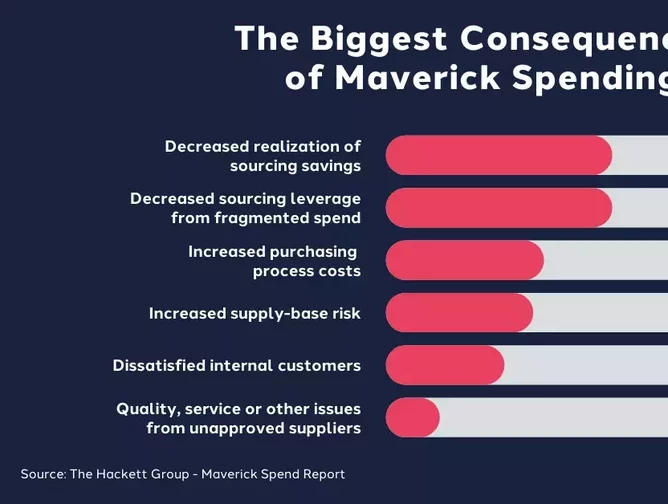Ignite Procurement: How to gain control of maverick spend

What is maverick spend?
Maverick spend - which can also be called rouge spend or unmanaged spend - can account for as much as 80% of an organisation’s total spend. The term refers to any purchases made outside of agreed contracts, channels, suppliers, and prices (i.e. the pre-estalibshed policy).
Common causes of maverick spend
Maverick spend is commonly seen in indirect spend and low-visibility tail spend that include multiple small transactions.
Ignite Procurement highlights that some of the most common causes of maverick spend include:
- Buying from unapproved suppliers or channels
- Buying unapproved goods and services
- Buying from an approved supplier but at a price different than the negotiated/contracted one
- Buying from an approved supplier at the right price but through an unapproved buying channel
What are the ramifications of maverick spend?
Considered a bane for most procurement functions, the Hackett Group identifies that 29% of indirect spend is off-contract. This can be a sign of bad practices - poor visibility and policy violations.
The group also indicates that 10% of maverick spend is typical for a non-mature procurement function, 5% for a world-classs organisation, and an even bigger problem for large companies spread across multiple locations.
According to APQC (in 2019) organisations with greater than or equal to US$500mn in annual revenue maverick spend accounts for 2.5% of more of total purchases, and 1% for top performers.
“Let us see how it looks in terms of dollars: For companies with US$1bn in the yearly purchase, this means having US$10mn in unmanaged maverick spend,” commented Ignite Procurement.
The effects of maverick spend
“In addition to draining your savings, costing you time and resources, every maverick purchase undermines the impact of your procurement activities and pushes your company away from the bottom line,” said Ignite Procurement.
Some of the various effects include:

How to reduce maverick spend and drive savings in five steps
- Investigate and understand the root causes
- Plan your initiatives
- Make sure that contract information and procurement policies are easily accessible
- Regularly report to relevant stakeholders
- Follow up, track, and ensure to take necessary actions
To find out more, click here.






